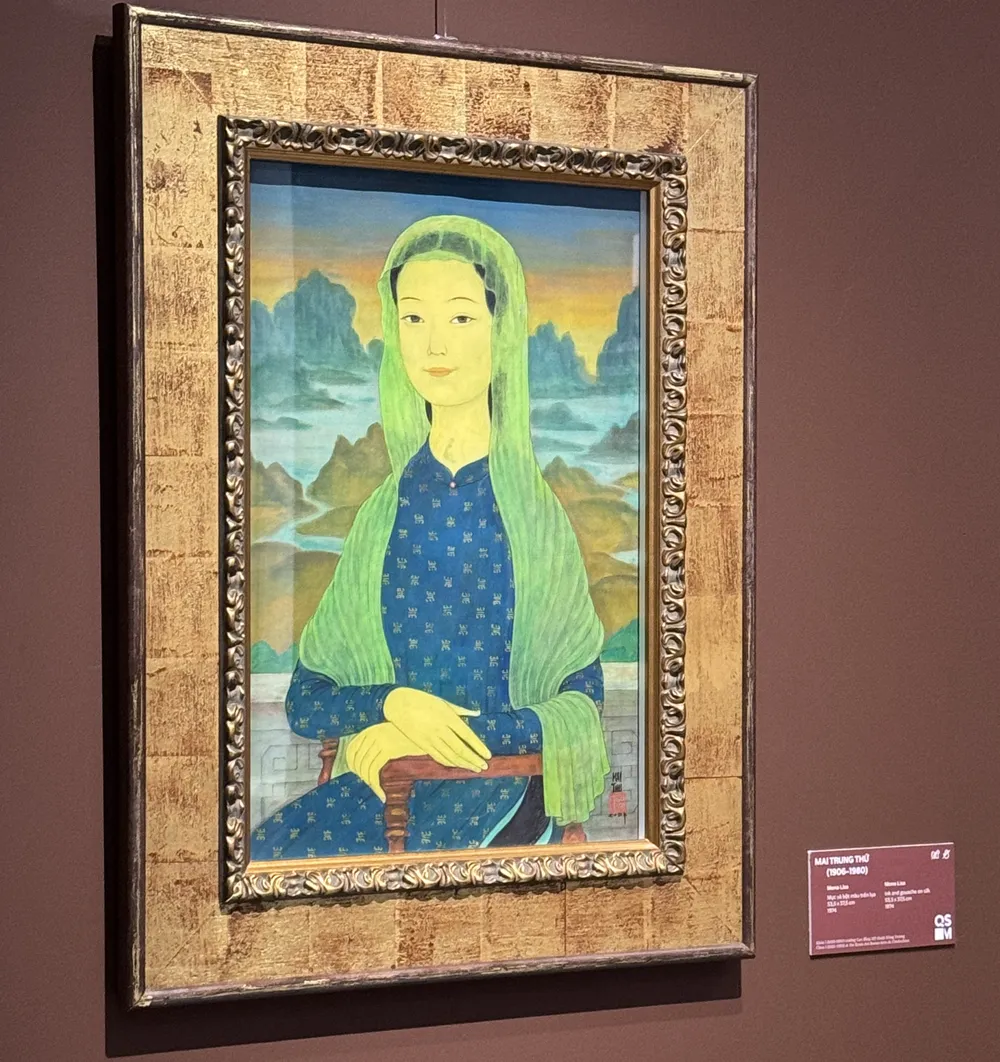
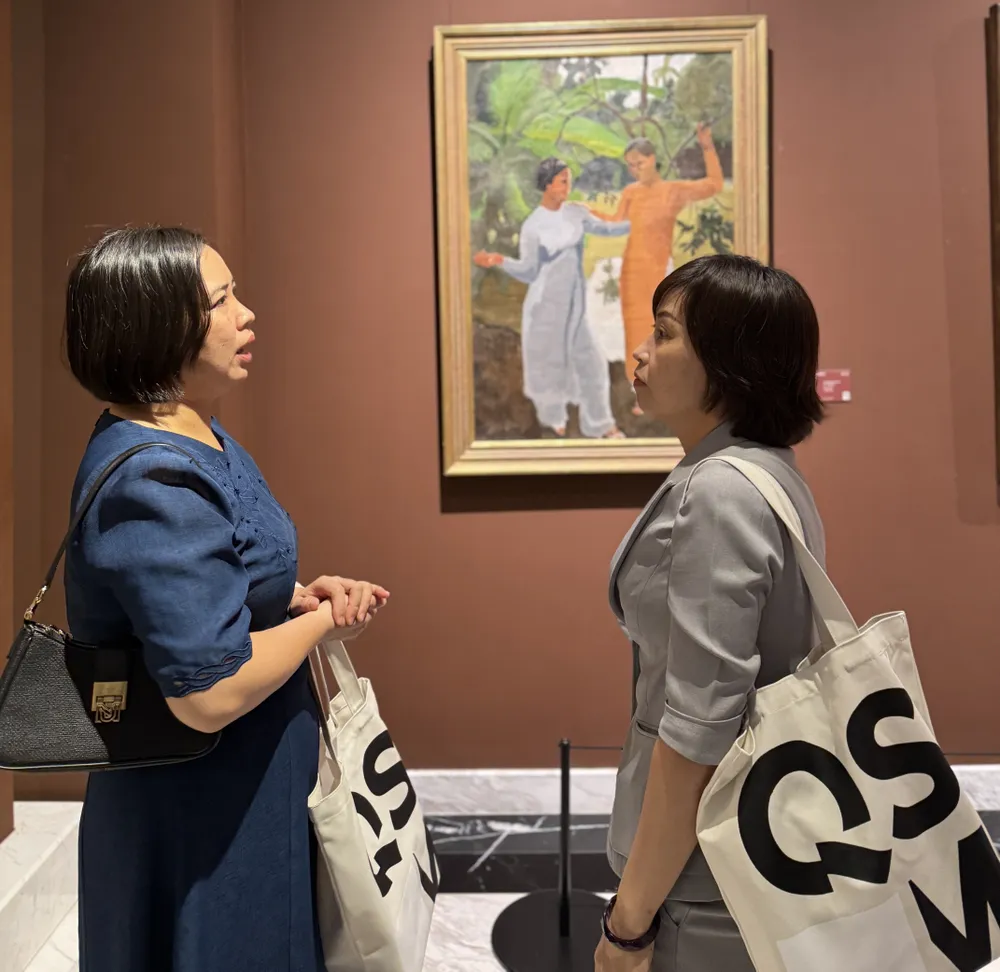
The exhibition will take viewers back to the Indochina period (1925-1945), marking a brilliant period in the history of Vietnamese fine arts development, where the spirit of experimentation met the profound fusion between traditional Oriental art and European academic painting. In 1925, the appearance of the Indochina College of Fine Arts (École des Beaux-Arts de l'Indochine - EBAI) under the leadership of Victor Tardieu opened the first formal fine arts training foundation in Vietnam following the Western model.
Going beyond simply importing the European academic model, the early years at EBAI became fertile ground for both lecturers and students to explore and exploit indigenous materials such as lacquer, silk, wood carving, while also referencing foreign influences such as France, China, and Japan.
These experiments gradually contributed to shaping a unique Vietnamese artistic identity during the Indochina period - with an aesthetic tendency, aiming for beauty through a subtle blend of Eastern and Western techniques and sensibilities.
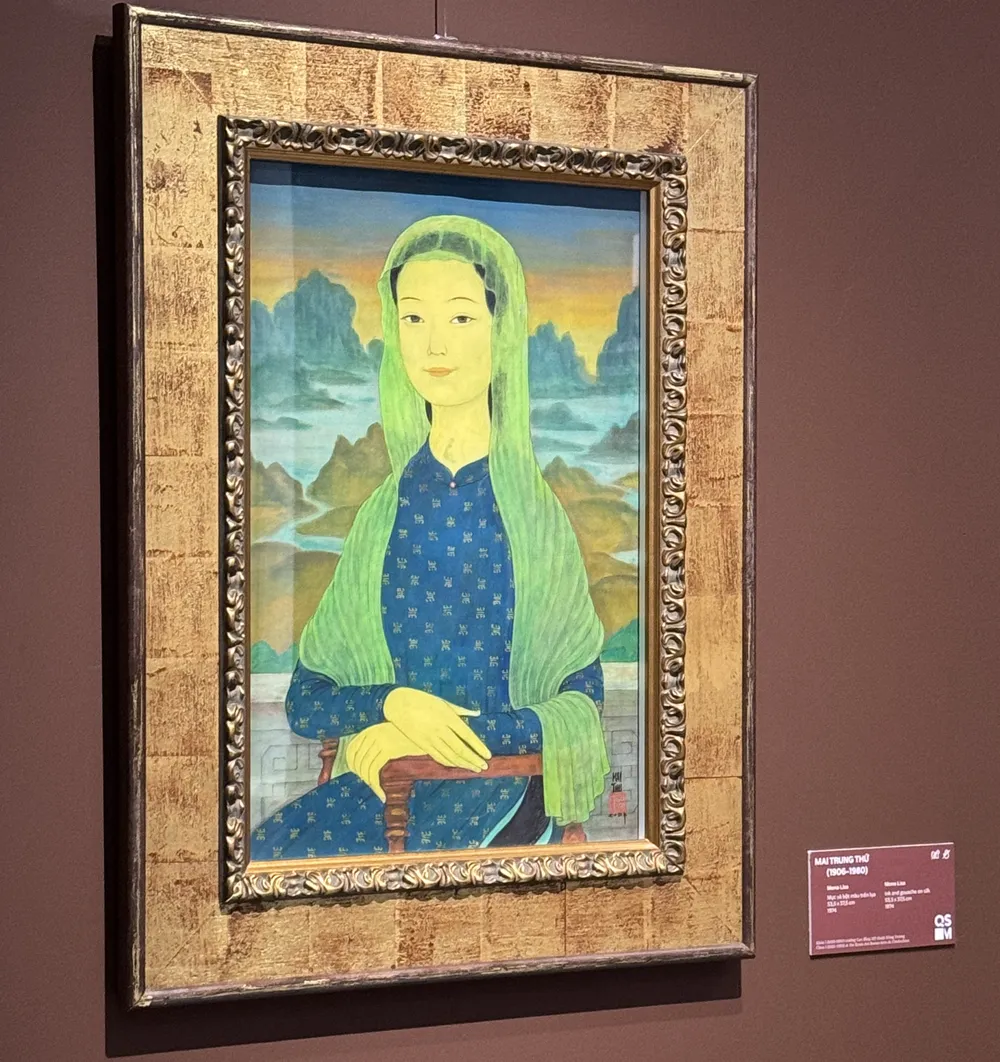
The highlight of this special issue is the painting “Mona Lisa” by artist Mai Trung Thu. Completed at the age of 68, Mona Lisa (1974) is the third and largest interpretation by artist Mai Trung Thu of the original work by the famous artist Leonardo da Vinci. Although it is a derivative work, what makes it stand out is not its imitation, but its ability to translate cultures: a dialogue between Eastern and Western paintings, both honoring the spirit of the Renaissance and affirming Vietnamese identity.
The character in the painting wears a traditional ao dai, set in the misty landscape of Ha Long. Her jet-black hair is lightly covered by a green veil, both hidden and visible behind the mountains. Her hands are folded in a soft, typical Asian shape.
The work is rendered on silk - Mai Trung Thu's favorite material - light as mist but rich in emotion, becoming a special visual medium that helps him "resist" the Western oil painting tradition in portrait painting.
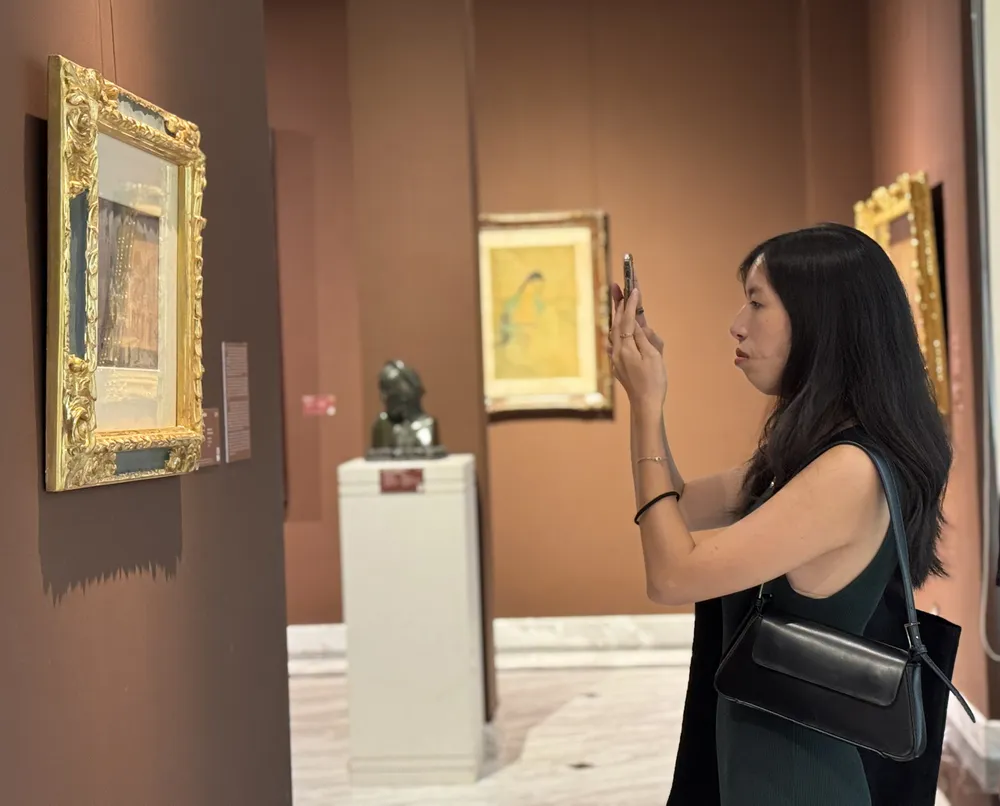
Along with this thematic exhibition, Quang San Art Museum launched a new brand identity, the result of a process of research, dialogue and creativity with experts in the field of design and art. The identity carries symbols, colors and visual language that are both expressive and inherit the spirit of heritage that the museum always strives for. The event marks an important turning point, repositioning the Museum in a new stage of development - where traditional values are continued by a contemporary, dynamic and inspiring breeze.
Mr. Nguyen Thieu Kien (Director of Quang San Art Museum) shared: “From symbols to colors, from fonts to graphic details, we have carefully selected everything with the spirit of both inheriting heritage values and opening up a contemporary, dynamic appearance - towards the community, towards the future”.
Source: https://www.sggp.org.vn/bao-tang-nghe-thuat-quang-san-gioi-thieu-tac-pham-mona-lisa-phien-ban-viet-cua-hoa-si-mai-trung-thu-post806456.html


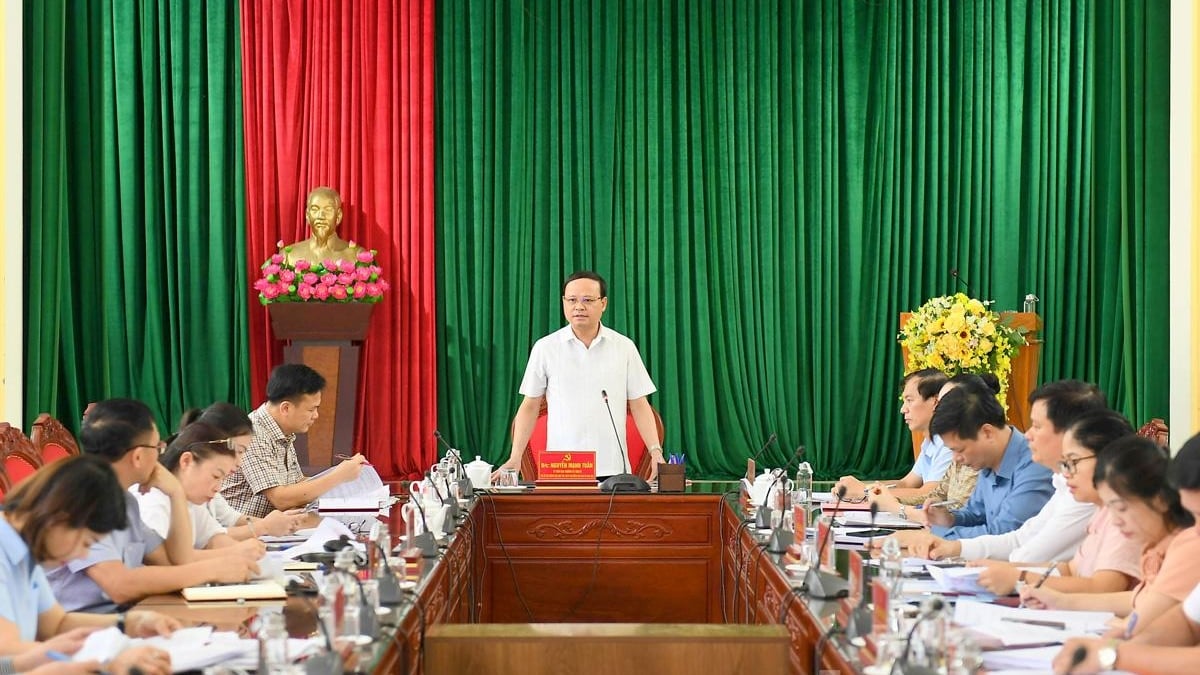



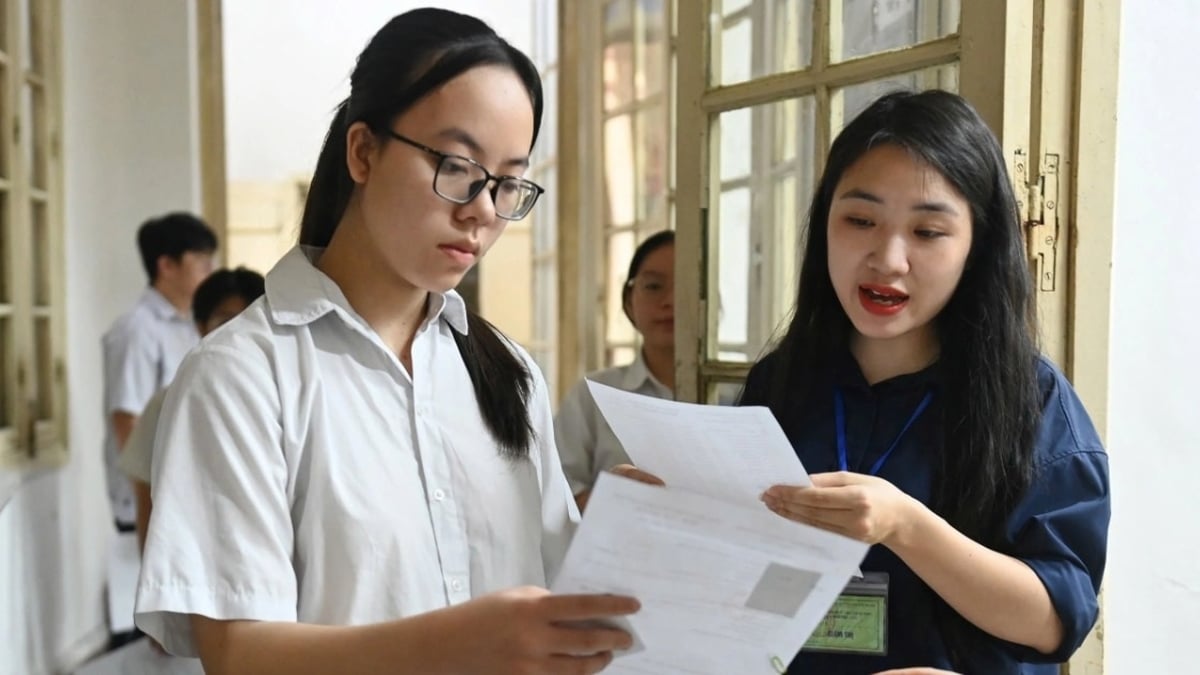
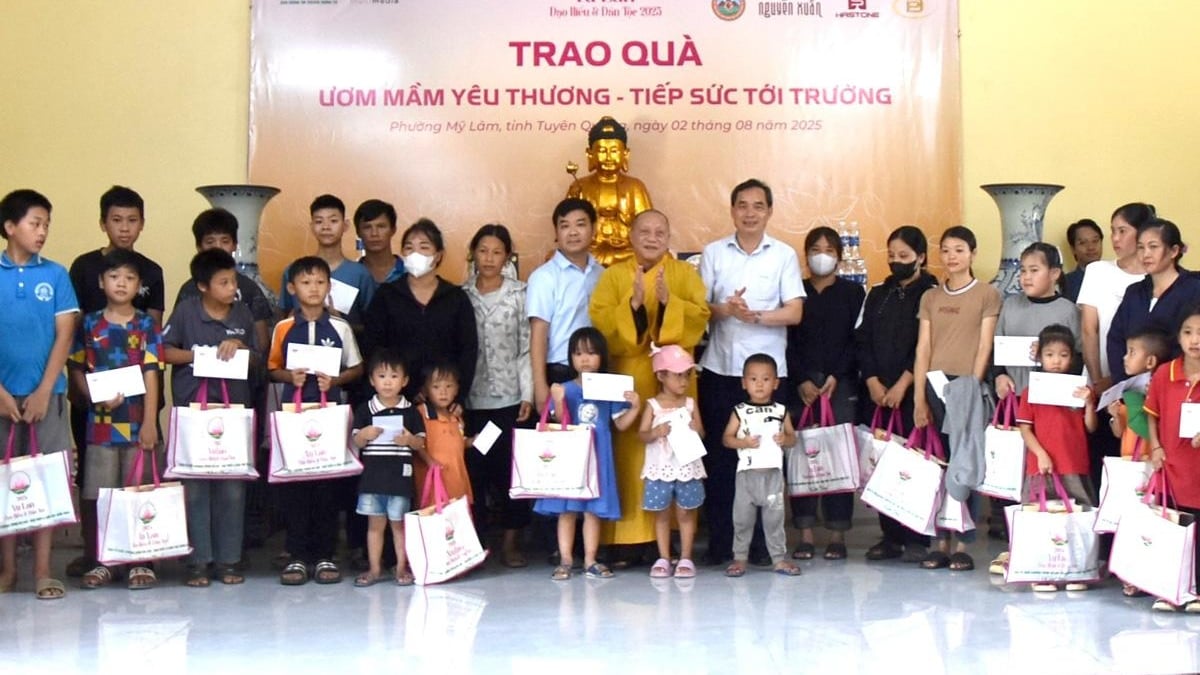

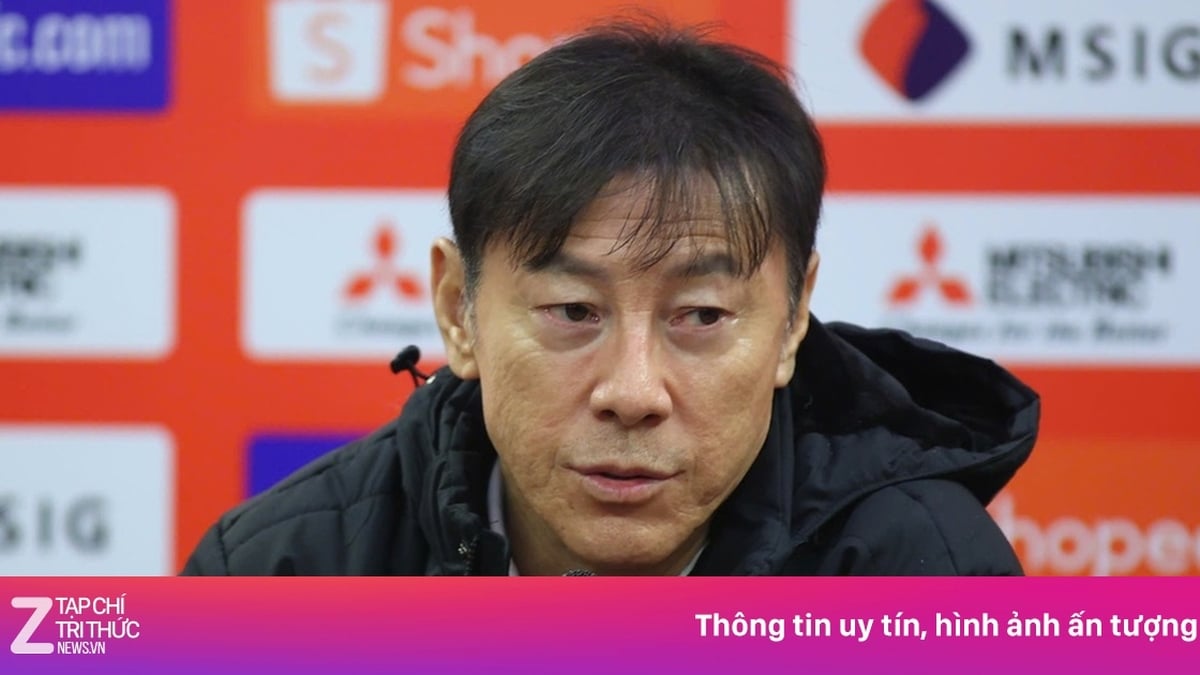
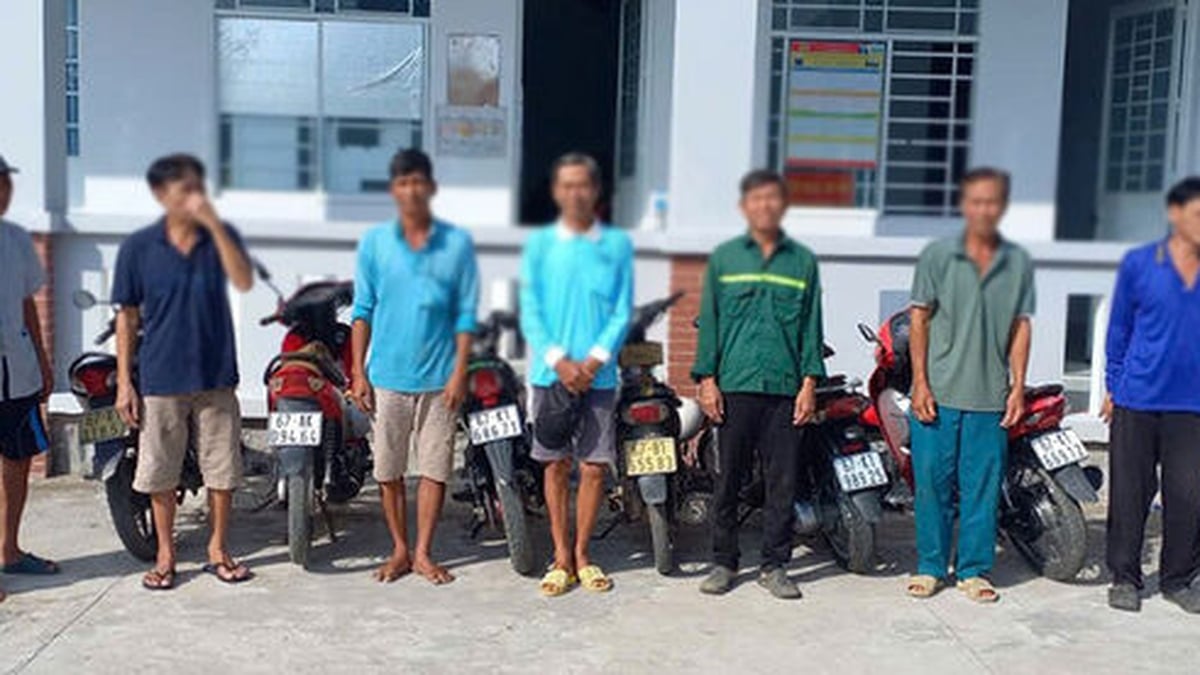































































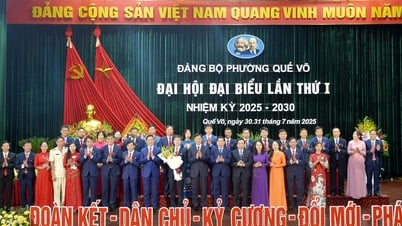

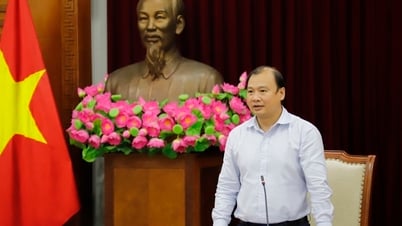























Comment (0)